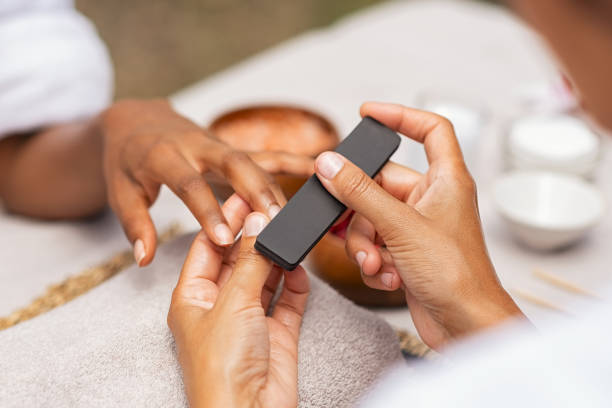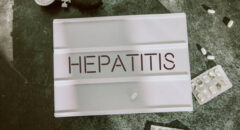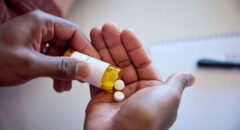
While a trip to the nail salon may be relaxing, the use of unsterilized tools, chipped nails, or cuticles cut entirely too low, could be putting your fingers, toes, and more at risk. To make matters worse (but not to incite panic), according to U.S. News & World Report, about 75 percent of salons in the U.S. don't follow state protocol for disinfection, leaving you at risk of serious infections, both internal and external. Here’s what you need to know…
Nail Fungus
Before you take a seat in that super inviting massage chair and immerse your little piggies in a warm, bubbling foot bath, you may want to ask your technician when the bowl was last sanitized. Not satisfied with the answer? Politely ask that the bath be cleaned properly prior to your pedicure. Your initiative can mean the difference between summer ready toes and developing a nasty fungus.
If you believe you have developed toenail fungus, avoid pedicures altogether to avoid spreading and possibly creating a breeding ground for the unsightly foot funk. Fortunately for sufferers, the condition can easily be treated at home. Experts suggest the use of a topical cream, nail lacquer, and prescription oil, which can be applied directly on the nail.
RELATED: Cure Your Toenail Fungus With These Natural Remedies
Warts
Because toenail fungus isn’t alarming enough.
With a parade of customers passing through a salon each day, the risk of coming into contact with someone who may carry the contagious skin disease skyrockets.
Warts, caused by a virus called human papillomavirus (HPV), is spread through person-to-person contact by way of breaks in the skin. This also includes your feet, where plantar warts – which grow inward – can develop on the tops or bottoms of your feet. This can occur when a technician uses the same pumice stone on multiple clients.
Decrease your risk of warts by requesting the use of a new pumice stone before pedi time as well as the use of fresh gloves before lacquering your nails.
RELATED: How Healthy Are Your Nails?
UV Ray Exposure
Ever contemplated how that “drying station” is drying your nails? Powered by small lamps, drying stations emit the same UV rays released by tanning beds – you know, those frowned upon devices that can lead to skin-damaging effects like cancer.
Though the risk of developing skin cancer from exposure alone is slim, it’s definitely a contributing factor. According to a 2014 study published in JAMA Dermatology, after testing 17 different UV lamps, researchers found that the risk of cancer (from exposure) is
menial. However, it’s important to note that the same findings indicate that significant DNA damage to the skin can occur following 8 to 14 visits over a period of 24 to 42 months.
Respiratory Irritation
Believe it or not, the aroma of acetone and other chemicals, which fill your nail salon, can irritate airways and trigger asthma.
According to the U.S. Department of Labor, salons should avoid using products with the “toxic trio,” also know as toluene, formaldehyde and dibutyl phthalate, as well as use a respirator when working to reduce the risk of inhaling toxic fumes.
RELATED: Your Nails Could Be The Answer To Your Unusual Symptoms
MRSA
Better known as a type of staph infection called methicillin-resistant Staphylococcus aureus, this nasty superbug packs a powerful punch of severe symptoms including swelling, redness, cracked skin and pus.
Spread through the use of sharing unsterilized nail files, cuticle clippers, and other nail implements, the antibiotic-resistant infection can lead to scarring, amputation, and even death.
Decrease your risk by ensuring tools have been sterilized prior to use.









